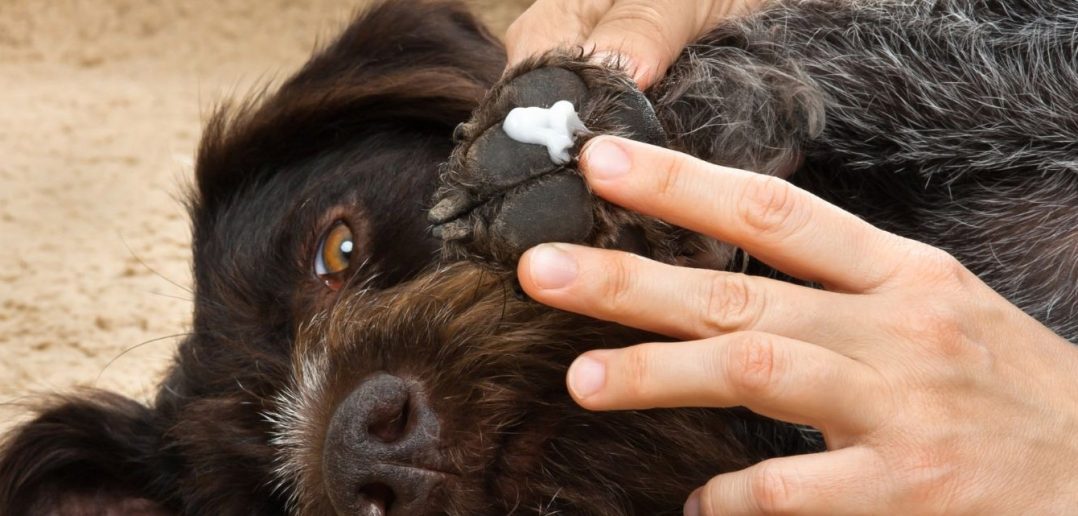Puppies always have those soft paws, but callouses begin to form as they grow and start running around. That rough texture is natural, but sometimes, a dog’s feet can get too dry or even crack for various reasons. This can feel very uncomfortable for your furry companion, but the good news is, we’ve got some at-home remedies to heal dry paws that every canine-owner should try.
Why Do Dogs Get Dry Paws?
Your pooch may experience dry paws for various reasons. Prolonged exposure to the cold can make our hands feel chapped, which is also true for your furry friend. The problem is, this issue doesn’t go away once the cold weather fades, since exposure to hot surfaces such as rock or sand can also lead to cracking.
Weather isn’t the only thing you have to worry about when it comes to dry paws; some breeds are naturally predisposed to this due to allergies or other genetic dispositions.
Top At-Home Remedies
Cracked paws and noses can be quite painful, and luckily, there are various at-home remedies to heal dry paws. Many veterinarians and other canine experts recommend using a dog-friendly product to help your dog’s paws:
- Coconut oil
- Shea butter
- Beeswax
Ensure your dog’s paws are clean and dry (a quick dip in warm water and a thorough towel dry should do the trick. You can then rub any one of these oil-based products onto your pup’s paws each night as needed.
Be aware that if you don’t crate your dog soon after the spa treatment you may find pawprint shaped stains around your house. If your dog is amenable to wearing a sock, that can also help.
Alternatively, you can check out these instructions for creating a homemade balm that’ll soothe your pup’s chapped feet.
All that said, you shouldn’t use lotion meant for our bodies on your pup. Moisturizer is perfectly safe for us, but it could be toxic for your pooch. Dogs often lick their feet while grooming themselves, so using one of the natural remedies listed above is best—all of these are safe for your canine to eat.
Tips To Prevent Dry Paws
Preventing dry paws isn’t always possible, especially when they’re responses to seasonal allergies, but you can protect your pup’s feet in some cases. Dogs can wear booties or sport a protective balm in the winter as well as anytime you plan to hike in the warmer months. Similarly, you should check the ground temperature before walking your dog. For instance, before taking a walk along the beach together, place your hand on the sand for 10 seconds. If your hand feels uncomfortably hot, the sand could damage your dog’s paws.
Keep those puppy feet well-protected and moisturized so that you and your canine can happily run around together!




